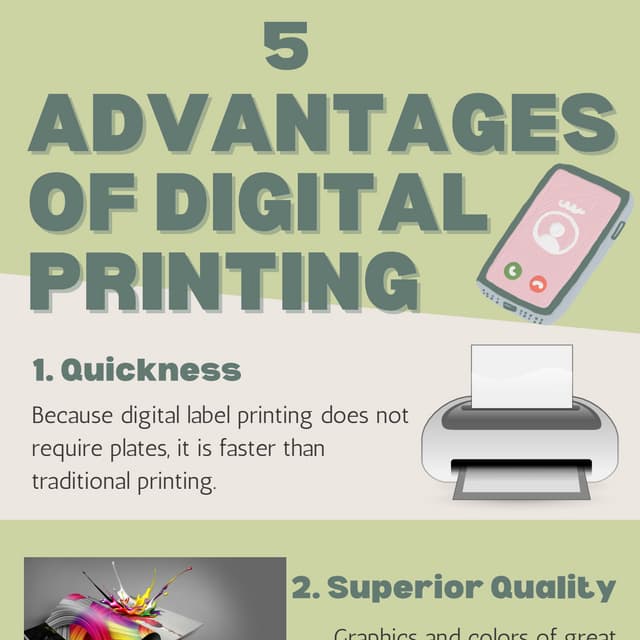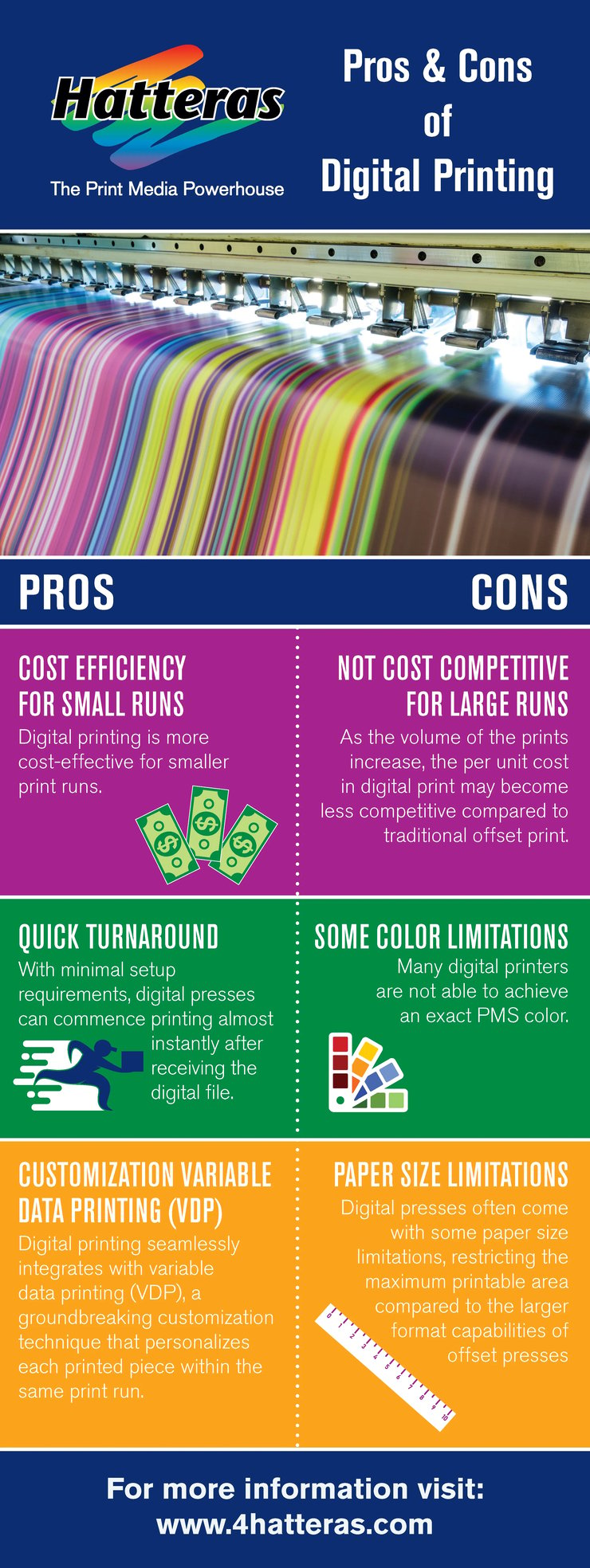The Facts About Digital Printing Uncovered
Table of ContentsDigital Printing - QuestionsA Biased View of Digital PrintingDigital Printing for DummiesDigital Printing Fundamentals ExplainedThe Buzz on Digital Printing
Unlike conventional balanced out printing, which counts on mechanical procedures, digital printing makes use of sophisticated modern technology to generate top quality prints. One of the key benefits of digital printing is its.
The liquid ink or printer toner sticks uniformly to the paper surface, leading to vibrant and true-to-life colors. Uniformity is one more substantial advantage supplied by digital printing. Unlike countered printing, where variations can take place due to aspects like plate wear and ink thickness variations, digital printers continually deliver high-grade prints from the first web page to the last.
Electronic printing allows for higher adaptability in terms of personalization and customization. With variable data printing capacities, each printed piece can be customized independently with one-of-a-kind text, pictures, or styles without giving up quality. Digital Printing. This level of personalization opens up brand-new opportunities for targeted advertising and marketing campaigns and customized interaction with consumers

Some Of Digital Printing
With electronic printing, each print is generated independently based upon need. This eliminates the need for extreme prints and decreases waste substantially. By only creating what is needed, sources such as paper and ink are saved, making digital printing a more sustainable option. Traditional countered printing calls for extensive setup time prior to manufacturing can start.
These processes consume both energy and time resources. On the other hand, digital printing has very little configuration needs. The process involves transferring electronic files straight to the printer without the demand for plate prep work or color adjustments. Consequently, much less power is taken in during arrangement, minimizing environmental impact. Furthermore, since electronic printers do not require extensive workout times like their offset equivalents do, they take in much less power generally.
Digital printers use environmentally friendly inks and printer toners that have lower degrees of unpredictable organic substances (VOCs) compared to standard countered inks. VOCs are chemicals that add to air contamination when launched into the environment. Along with having lower VOC web content, many digital printers additionally use water-based inks as opposed to oil-based ones located in offset printers.
Digital Printing for Beginners
The use of green inks and toners in electronic printing guarantees that the printing procedure has actually a minimized influence on air quality and promotes a healthier working environment for printers and printing shop employees. Finally, digital printing provides various advantages over conventional balanced out printing (Digital Printing). It is an economical option that permits services to conserve money on printing expenses
The faster turnaround times provided by electronic printing give companies the opportunity to meet limited target dates and react swiftly to market demands. One of the key advantages of electronic printing is its enhanced flexibility and customization alternatives. This permits services to tailor their printed products according to their special demands and preferences.
A: Digital printing offers faster turn-around times because it calls for very little arrangement and preparation contrasted to balance out printers. A: Yes, electronic printing is much more eco-friendly than balanced out printing as it reduces waste and gets rid of the need for chemicals frequently used in standard methods.
Accept the advantages of digital printing today and unlock its possible to enhance your advertising and marketing efforts. Keep in mind: The above final thought area has been created complying with the given standards for an expert conclusion on electronic printing presses. Please note that some asked for writing styles, such as jargon, expressions, or colloquial language, might not be suitable in this context.
The Only Guide for Digital Printing
Offset and digital printing are the two most famous printing techniques for design jobs. Conventional countered printing and digital printing are valuable methods, each has benefits and drawbacks.

Although the equipment's set up costs are high originally, extra units come to be fairly much less costly as the quantity increases. Balanced out printing allows for a large range of print products to be used throughout production. It enables the printer to use various paper kinds, custom-made coatings, and different inks. The top quality photos produced with offset printing make it the favored approach, particularly amongst graphic developers, when seeking the best color reproduction, information, and professional-looking prints.
Some Of Digital Printing
The essential printing technique stays balanced out. For digital inkjet printing, ink is transferred directly onto the surface. Rather than relying on aluminum plates and rubber blankets to transfer a photo, electronic printing makes use of fluid ink throughout production. Standard home inkjet printers are among the most typical digital printing techniques.

Comments on “The 10-Minute Rule for Digital Printing”